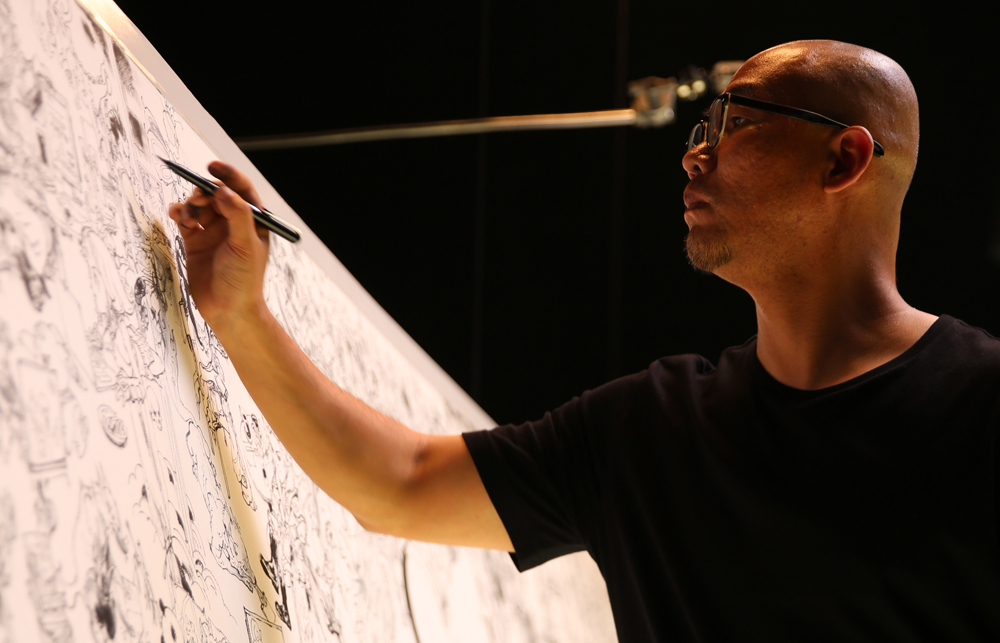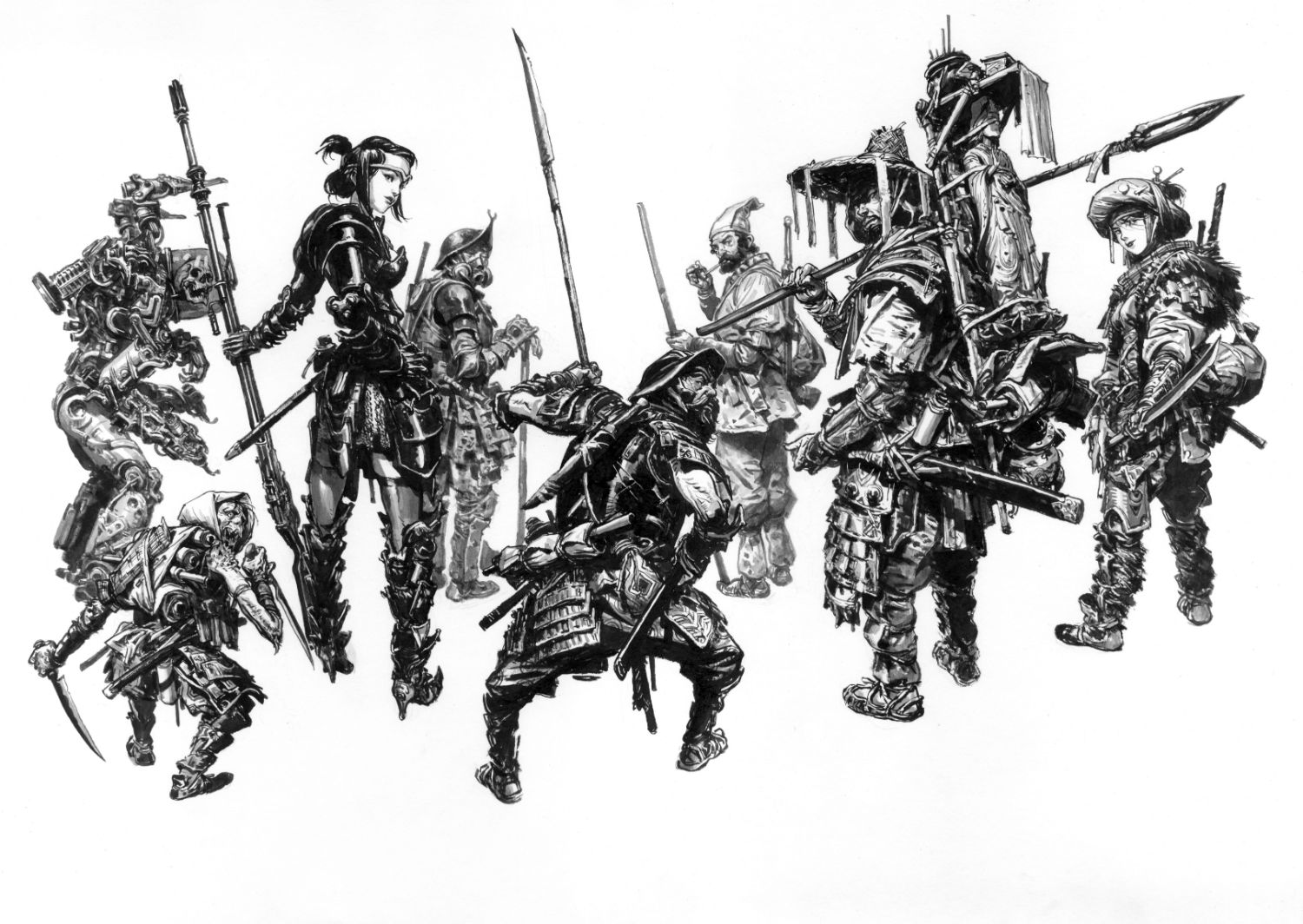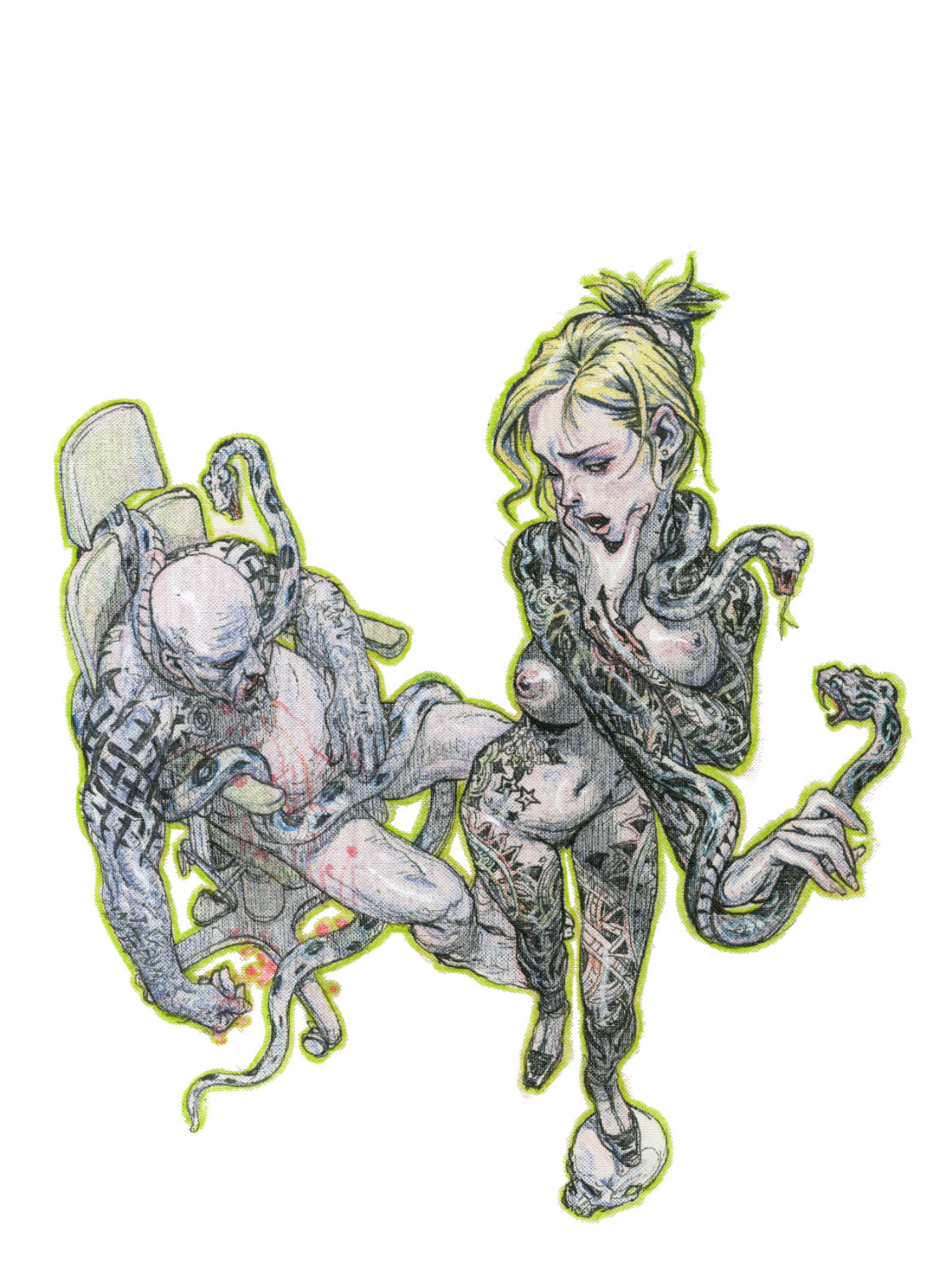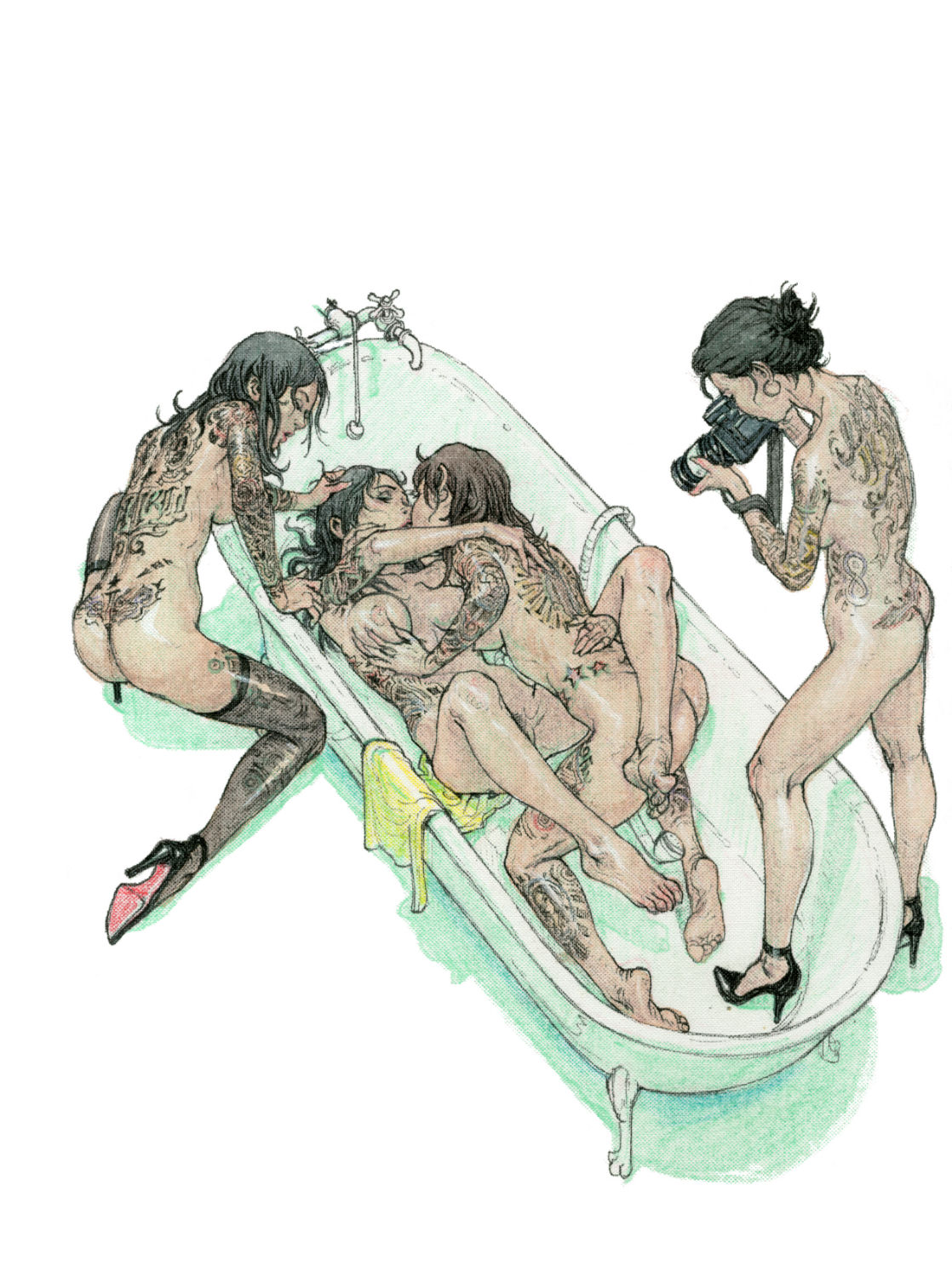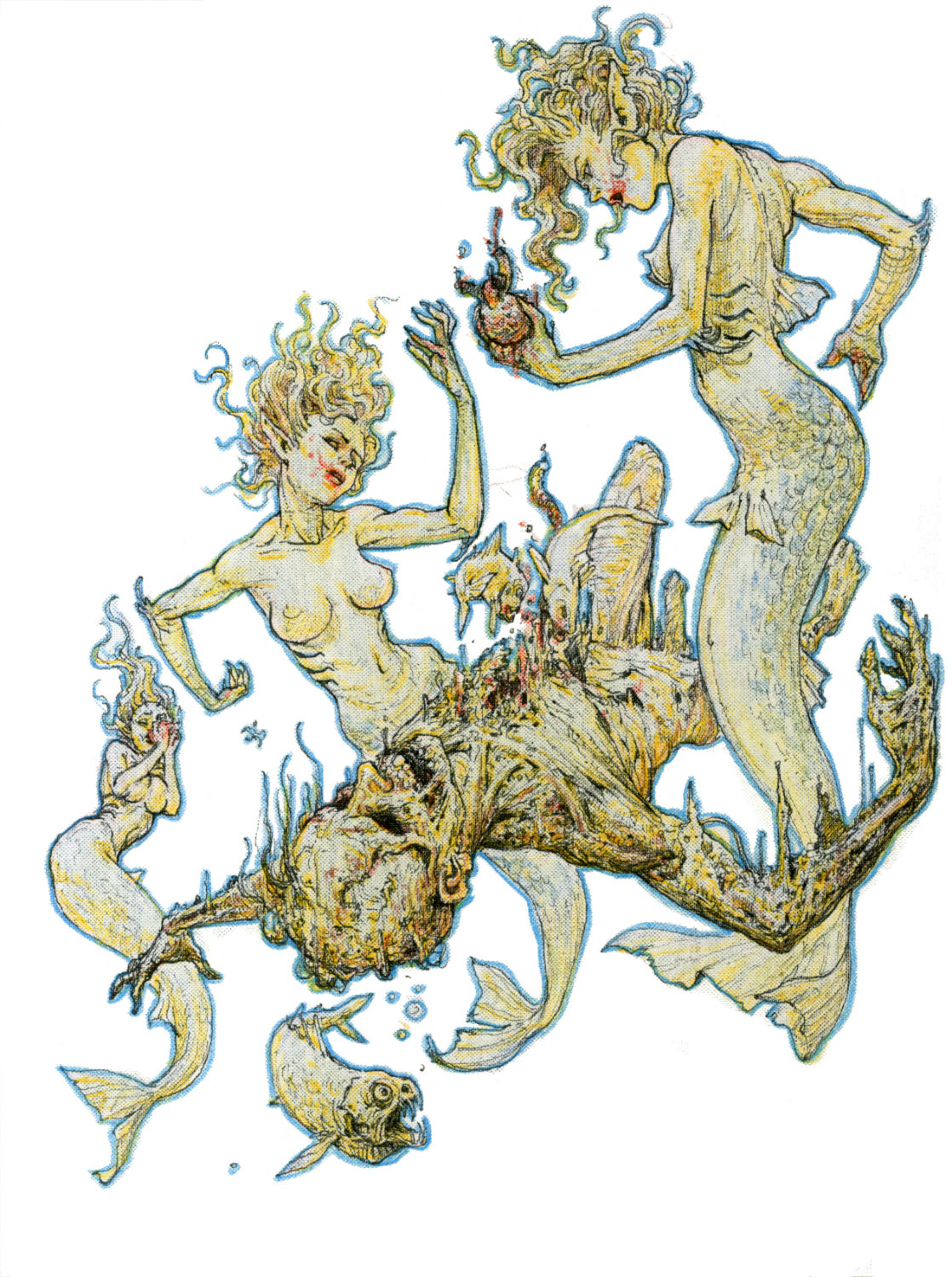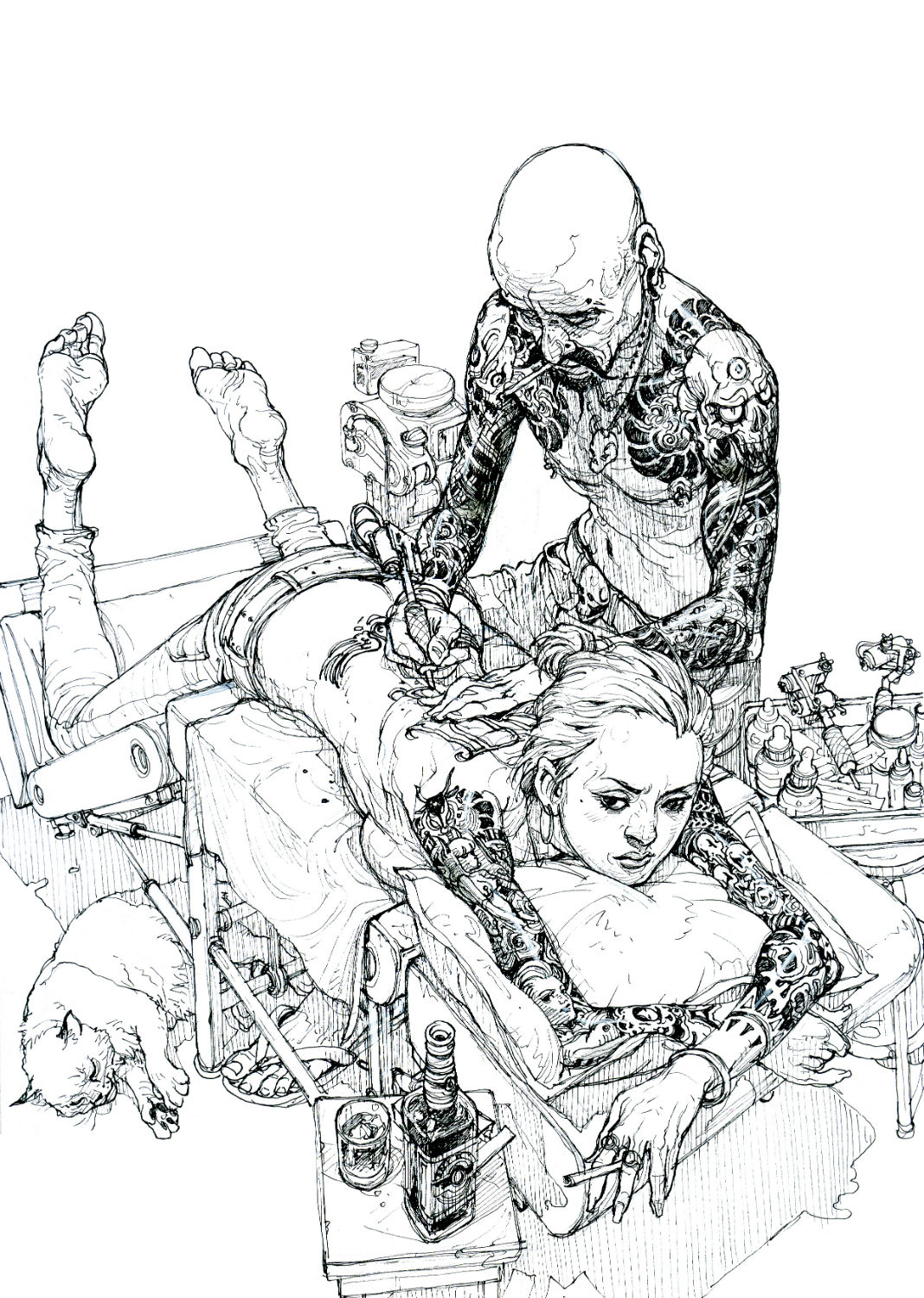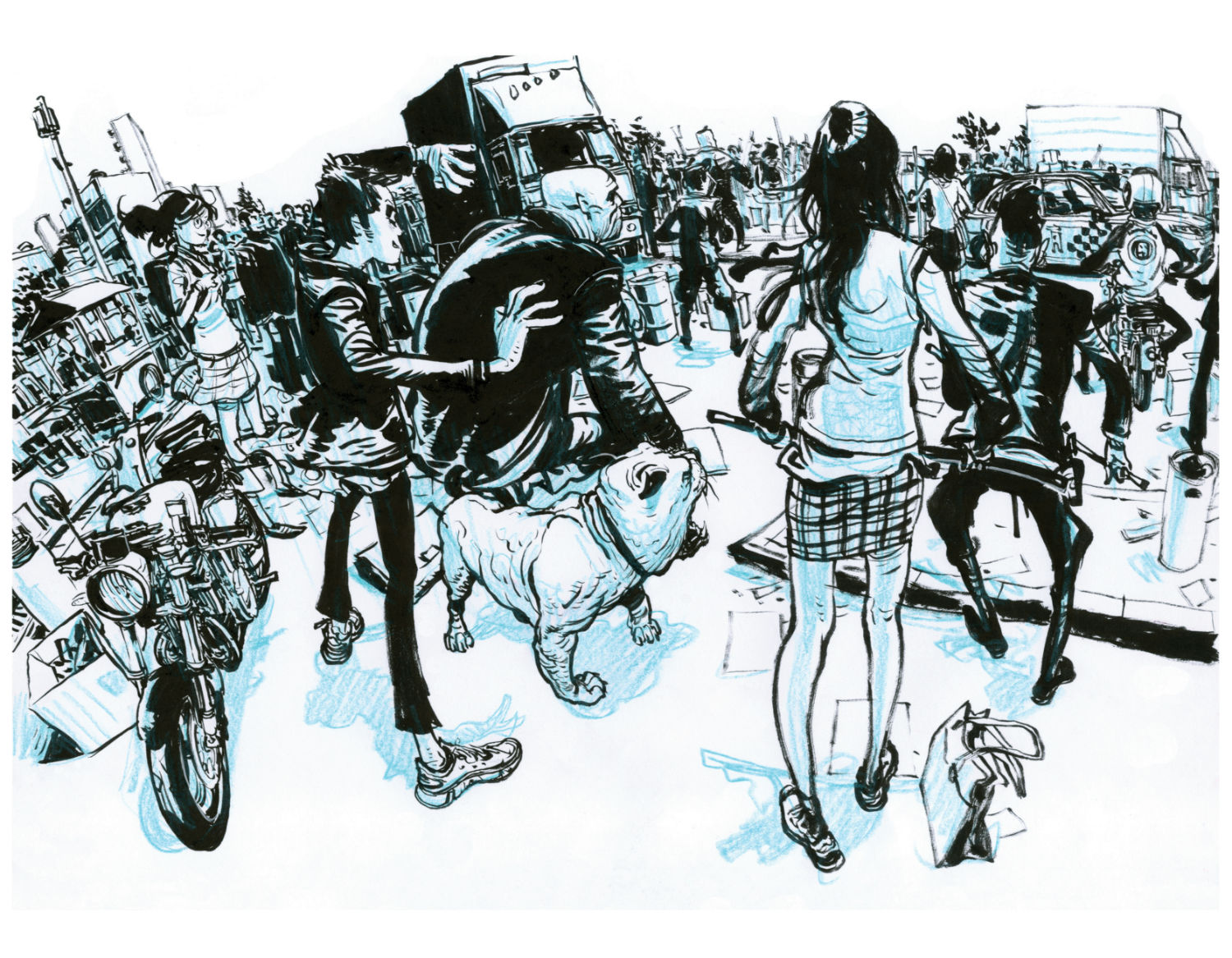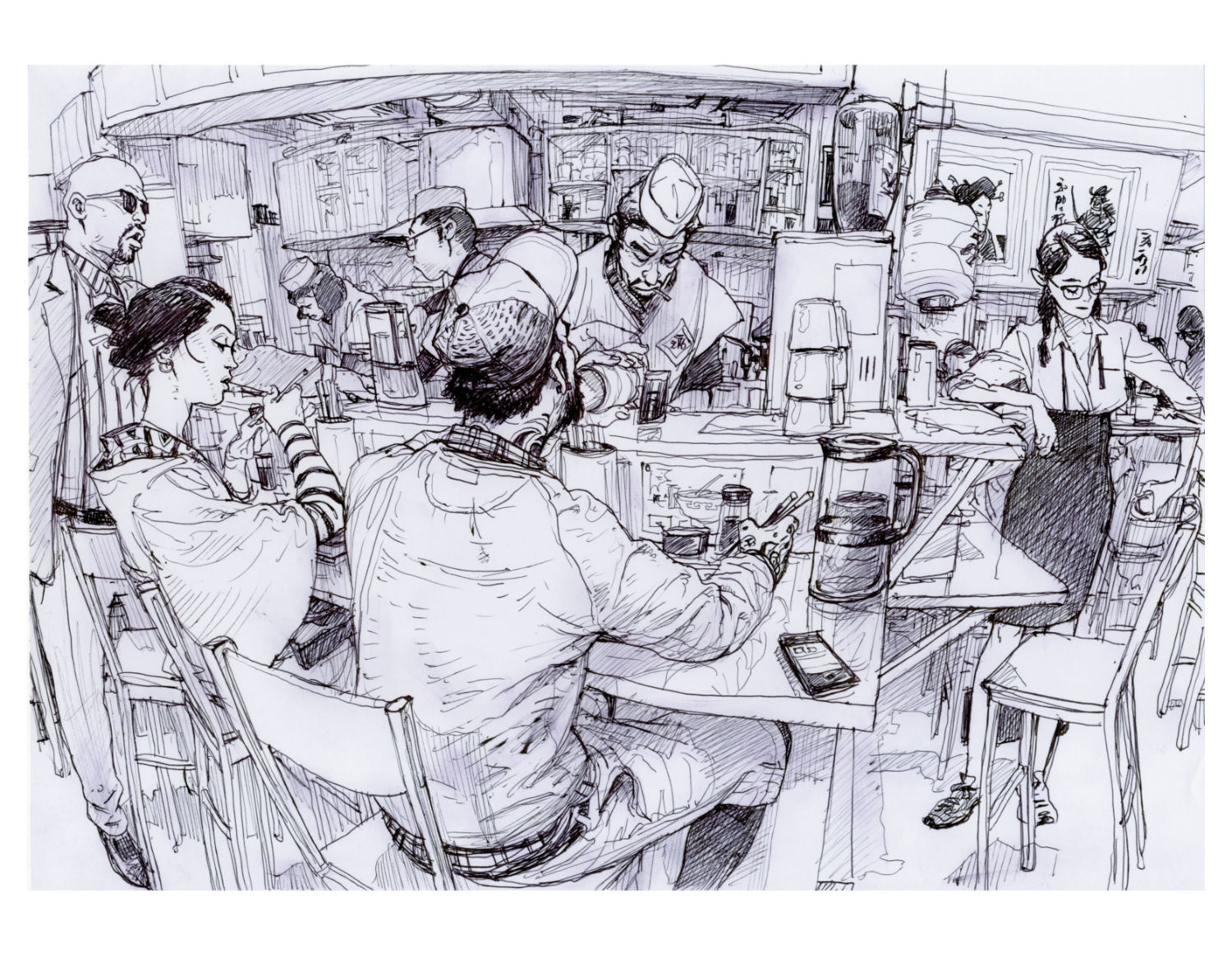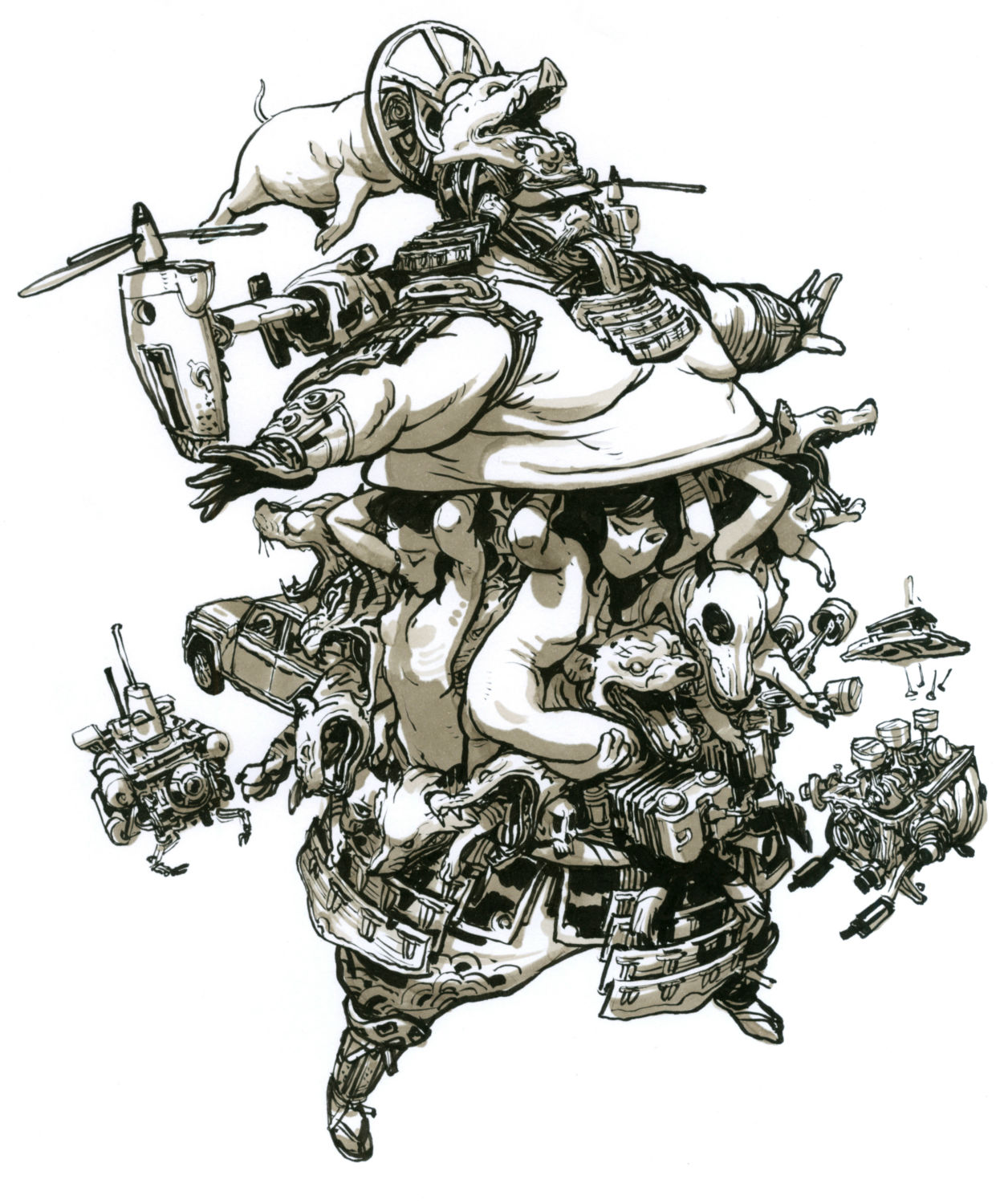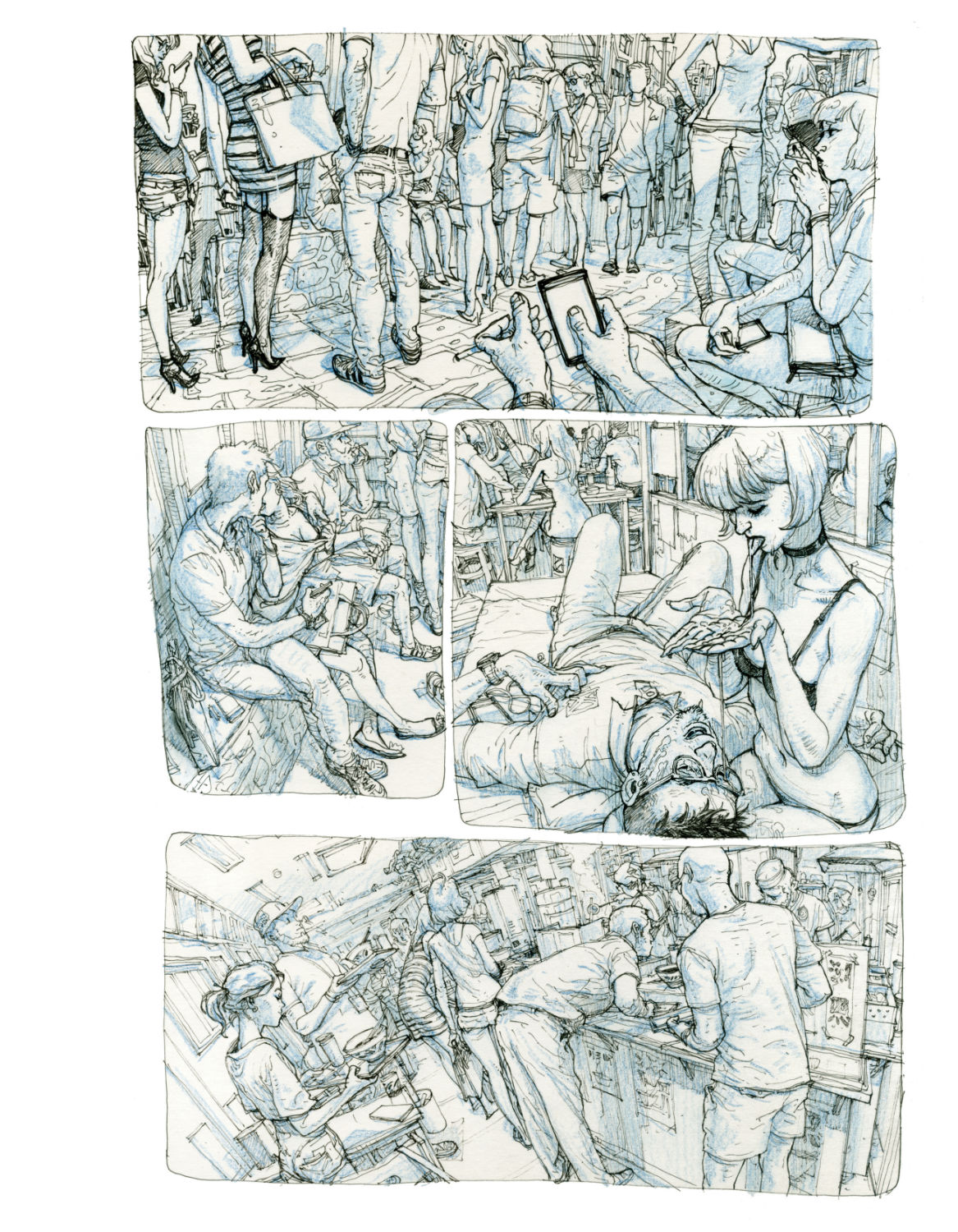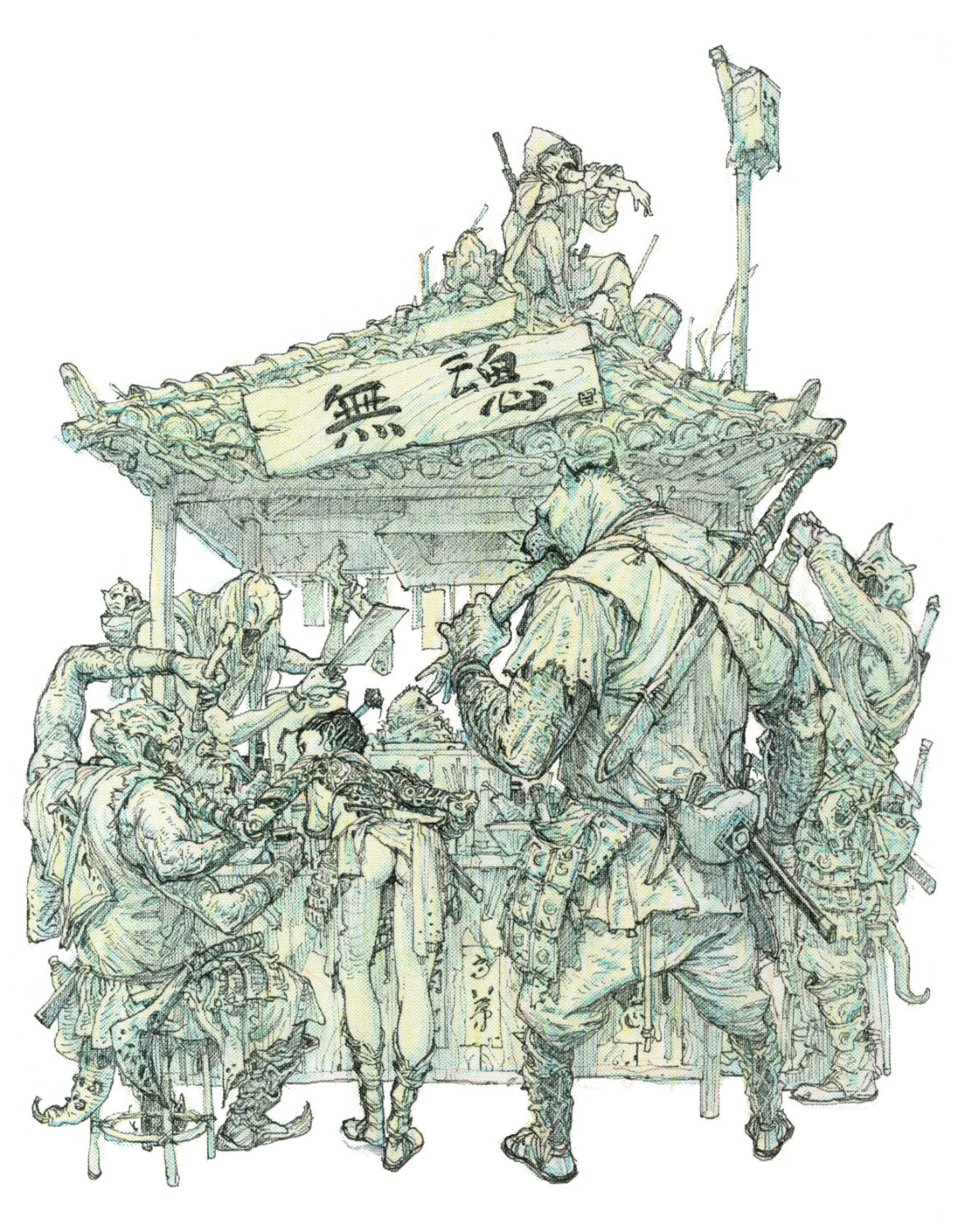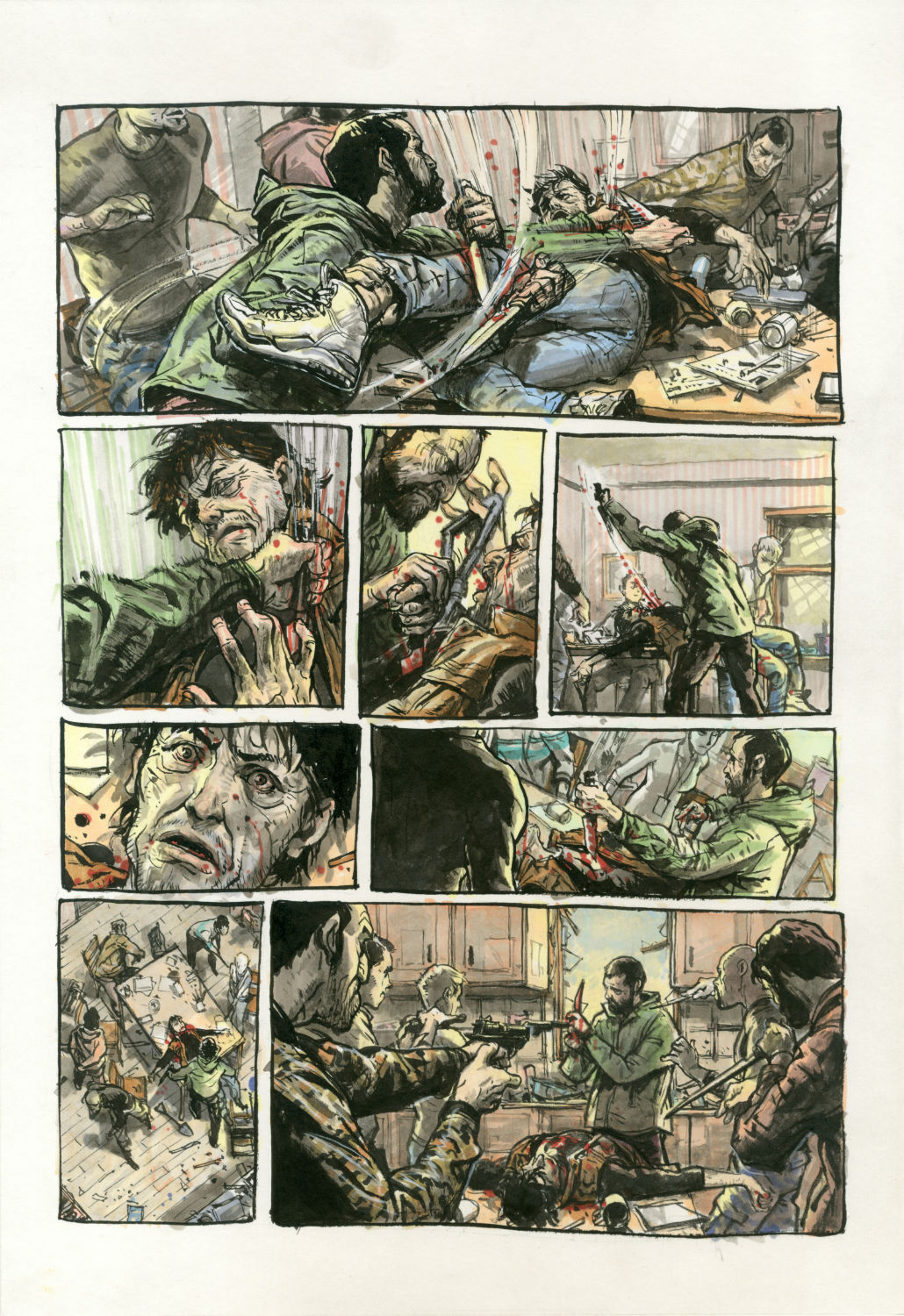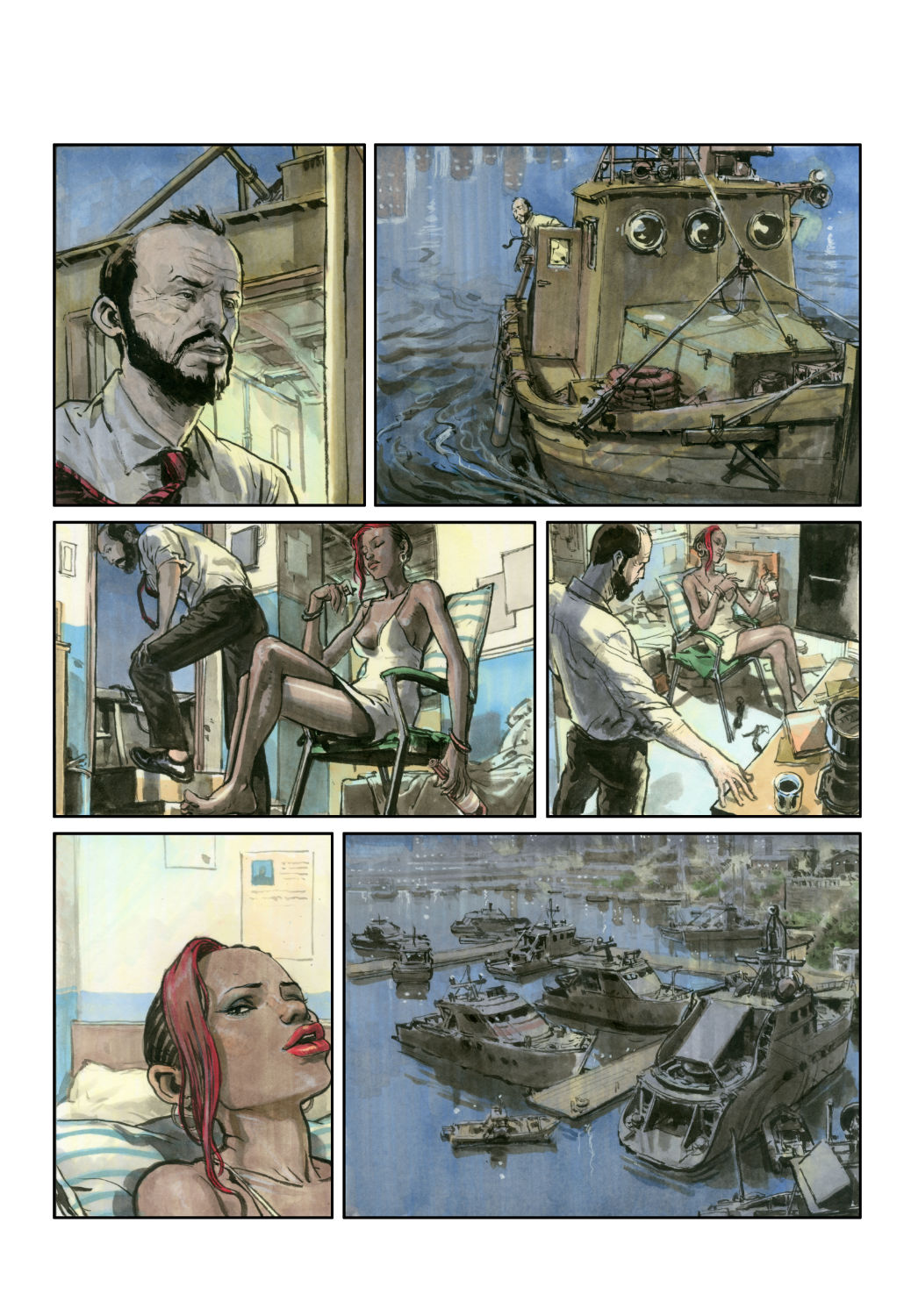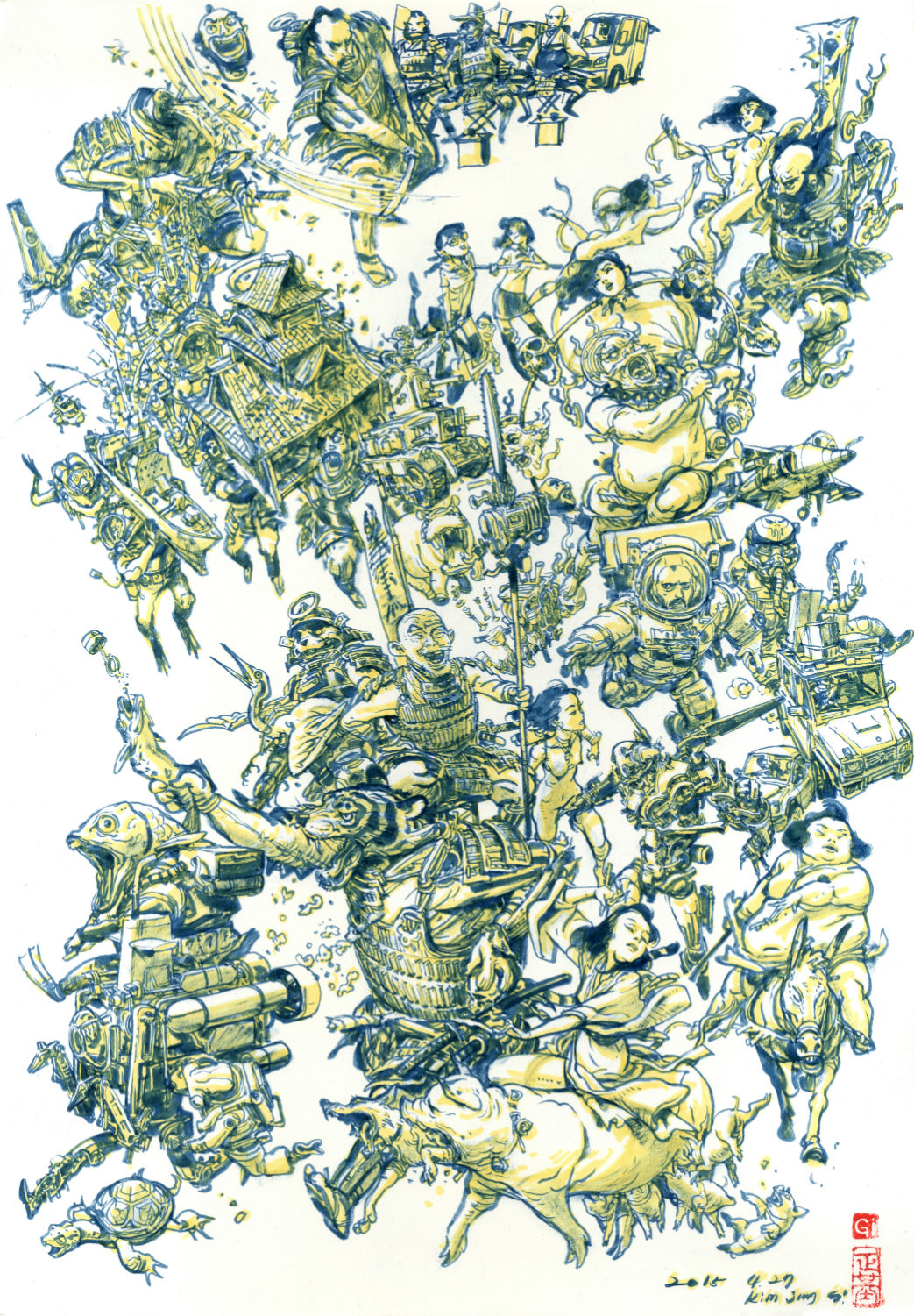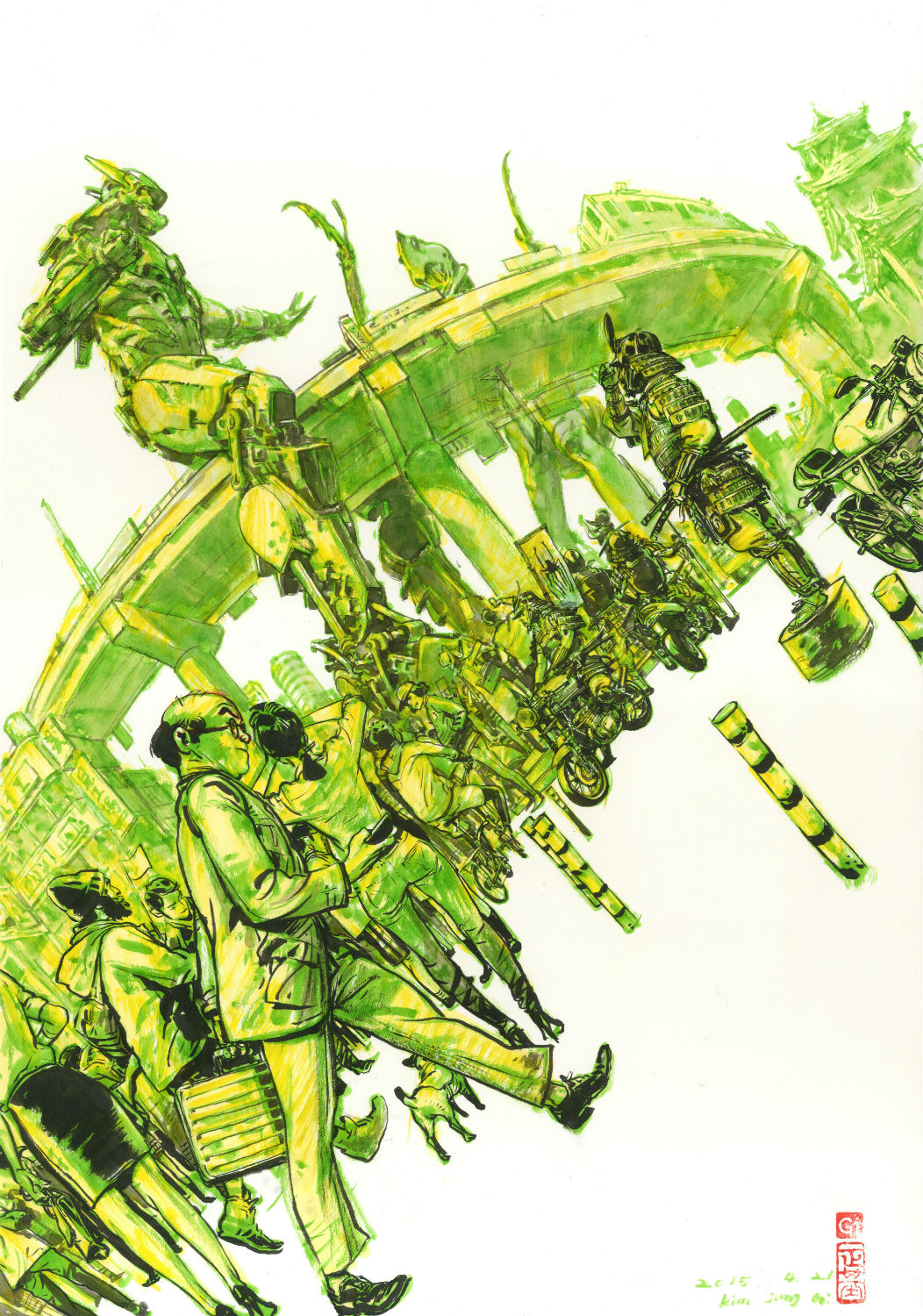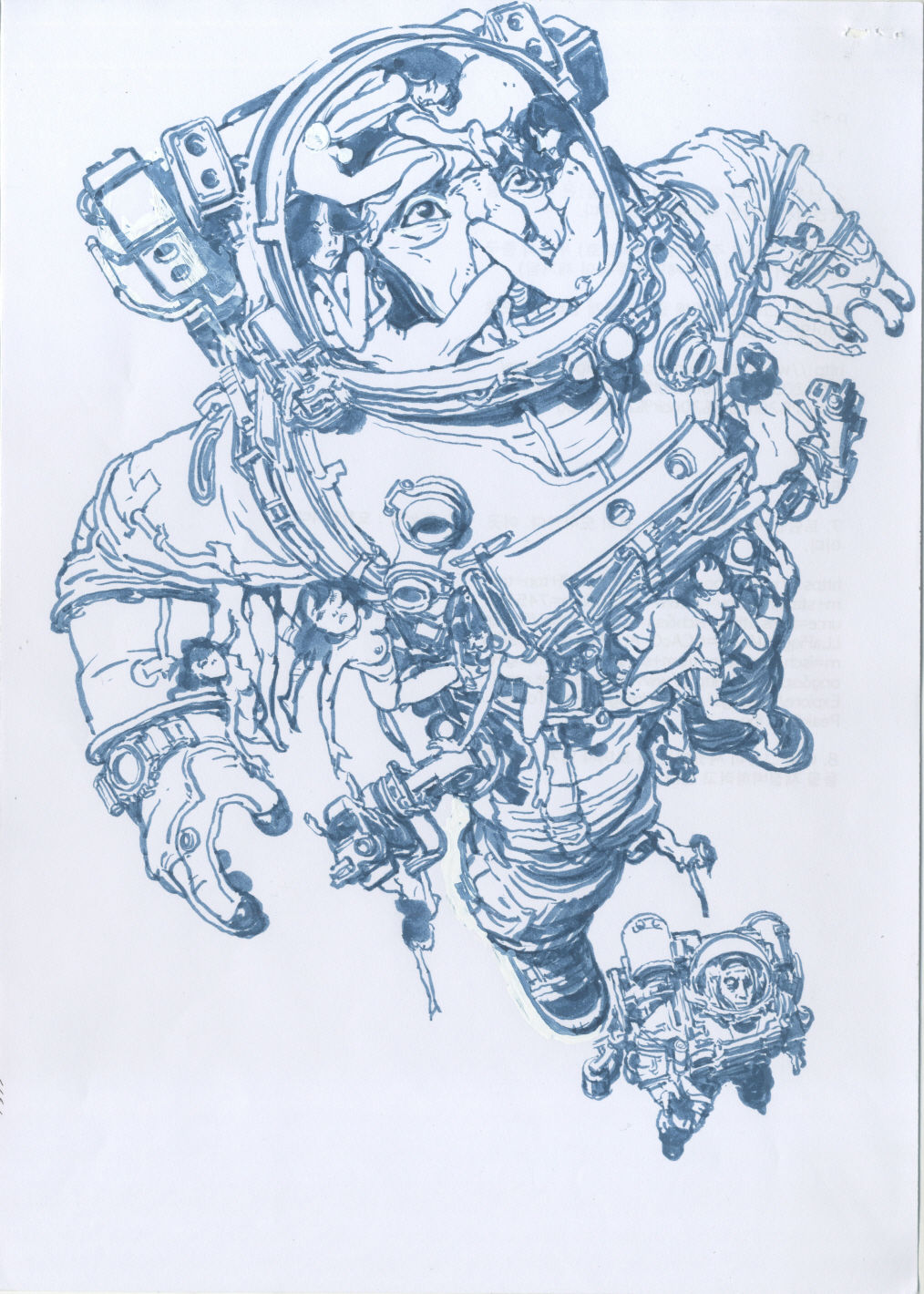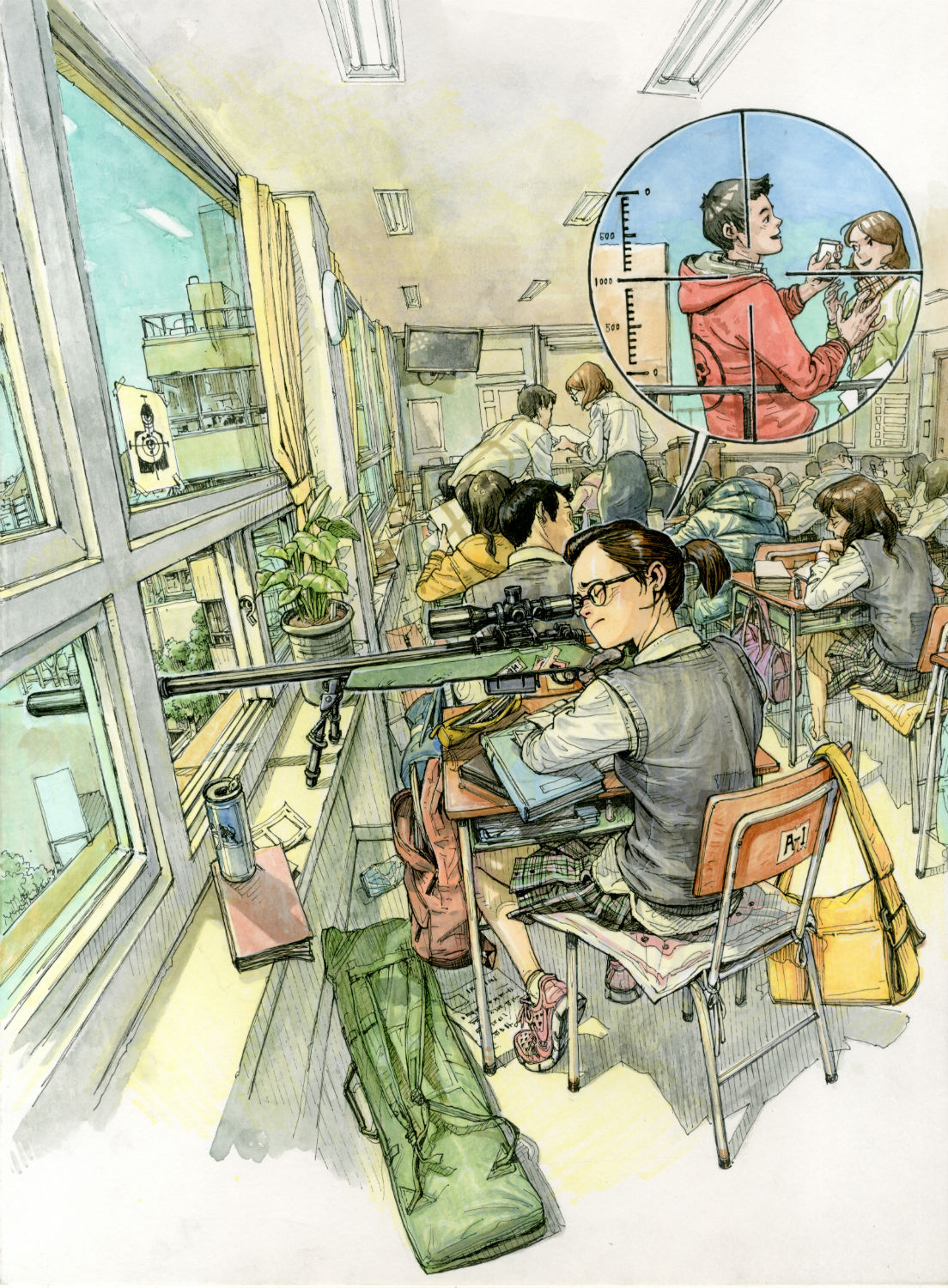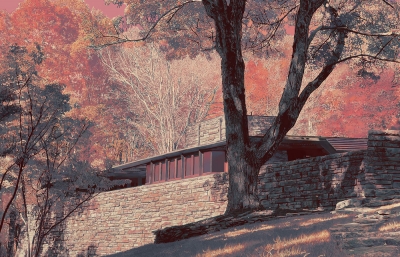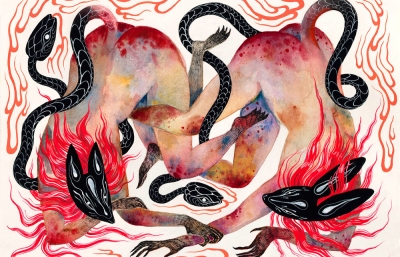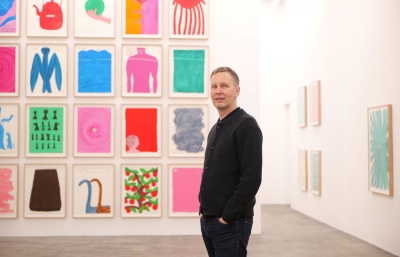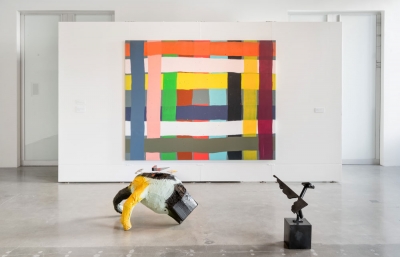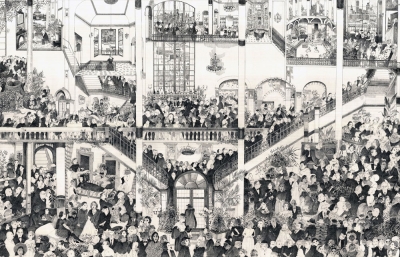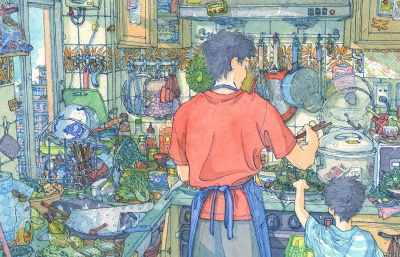When viewing art, we take in the final product—shapes and forms finalized, under-drawings covered by more accurate representations, little crimps smoothed out, the result of a method. In recent years, South Korean illustrator Kim Jung Gi has traveled the world drawing for an audience. His visual memory and ability to conjure complex scenes without references or initial sketches is masterful and mind boggling.
Watching Mr. Kim draw is a special opportunity. Through live demonstrations, published sketchbooks, and a multitude of online videos, he invites us to join the process and witness his pictorial diary. We caught up with Mr. Kim during his recent European travels to talk about his work. —Aesop Rock
Aesop Rock: I know that you first had an interest in wanting to pursue comic art in kindergarten. What were some of the very first comics that pulled you into that world?
Kim Jung Gi: I can’t recall all the names of the comic books that influenced me, but when I was in middle school, there were lots of pirated comic books that I came across, like Akira, Dragon Ball, City Hunter, Fist of the North Star, Apple Seed . . .
What was it about them that spoke to you more than, say, painting or other forms of picture making?
I guess that I was hugely influenced by films when I was much younger. Now, I try to find my inspirations from everything—magazines, fashion illustrations, books, visual images, etc. I have also found that there are lots of interesting things in reality. Everything that I see interests me.
Did you grow up around art and artists? Are there artists in your family?
No, I don’t have any family members who draw, so I think that I am basically the only artist in my family. I don’t see myself as someone who grew up surrounded by art, but I still remember that I really loved reading books for children with illustrations in them. I preferred only the books with good illustrations, even when I was little. I really was interested in watching movies too.
What kinds of movies were your favorite now and as a kid?
I loved animation when I was younger, Japanese animation especially: Future Boy Conan, Mazinger Z, 3000 Leagues in Search of Mother, Heidi. My favorite movie for the moment is Seven.
At what age did you notice your visual memory begin to catalog things well enough to recall them as you do? Is there a process or exercise used beyond just simple observation?
I think that I still have the same visual memory that I’ve had since my younger years. I’ve loved doodling since I was a kid. I continued drawing the things that I wanted to draw over and over again, things that I wanted to have. I guess this instinct to be interested in the various objects surrounding me has remained until now, although I feel it has become more accurate and detailed over the past years, since now I have more knowledge and more experience. I think that beyond observing something, it’s better to experience it in every sense, to touch and see it in reality within its surroundings. In any circumstances, it’s best to experience it for real. You should never stop collecting new information, new visuals, and constantly reciting them.
What objects give you the most trouble? Can you think of anything that you would have trouble putting to paper without a reference?
I think that I can draw just about anything without any restrictions. Surprisingly, I sometimes have difficulty in drawing simple things without reference, like a pinwheel, or a paper airplane.
What gave you the idea to travel around drawing in front of people instead of just showing completed works?
I wanted to do something different than others. I just wanted to try something new. The first time I tried a live drawing show in front of a crowd was in 2011 at the Comic Festival in Bucheon (BICOF). I had my own booth. Instead of showing others my completed works, I decided to cover the three walls that surround the table with paper, and I started to draw. We filmed the process and posted the video on YouTube afterwards, just for fun. I guess this became a trigger.
Subsequently, people became interested and they started to invite me places. It all came naturally. It was also the idea of Hyun Jin Kim, my partner and the co-founder of Super Ani. He had thought that the characteristics of my drawings suited the idea of drawing in front of people.
Is there a difference for you between drawing for a crowd and drawing alone? Is the process and goal the same?
There’s not much of a difference, although I find it more comforting when I draw on my own. I feel it is more free, there’s no restriction of imagination. But drawing for a crowd has its own taste, different from drawing alone. When I draw alone, it’s really for myself. What I do on my own is really doodling, for fun. But when I do a live drawing show, while the process amuses me, there is a certain pressure. I guess I would say that the process and the goal in this case is not the same. In some ways, to talk about imagination, there are certain limits when I draw in front of the crowd.
Many would consider sketching to be the means to an end, whereas these exploratory drawings seem to be your main focus. You’ve also released three large sketchbook volumes. Are these drawings the final stage for you, or are you searching for something in this process that might lead you elsewhere?
There are some drawings that I consider to be finished and some that are in process. Some of them are part of the process for the whole work that I am doing, and I am searching and learning during this practice. I am satisfied when I am drawing, but at the same time, there are definitely moments when I learn something, so I think that I can say that I feel both ways at the same time. I find the process predominantly more interesting than the result.
For these large-scale drawings, are you making the narrative up as you go along, or is there a plan from the beginning?
Because it is large, I cannot always have the result in my head. Usually I have 60% of the final image in my head, how it’s going to spread out. The rest, I follow my instinct; I make it up on the way.
What is your favorite pen to work with?
In the past, my favorite pens to work with have always been thin ones. I found it useful to work on details. Nowadays, I guess I’d say ball pens and brush pens.
Have you experimented much with digital drawing? Do you enjoy it as much as working with ink?
Recently, I received a Cintiq as a present. It is really fun, I enjoy it a lot. I was astounded by the progress of technology. I find that the sensitivity of digital drawing became really close to the works with ink, to about 90 percent.
Your choice of complex subjects, many mechanical pieces, multiple animals and tattooes leads me to think you purposely pick "difficult" things to draw? Do you draw what fascinates or what challenges you most?
I don’t think I purposely choose ‘’difficult’’ things to draw. I usually have a tendency to draw things that I am interested in at that moment. I do like to draw things with lots of detail, but it is sometimes harder to draw simple things than complicated things.
When did you start to employ the fisheye view that is apparent in most of your work?
Since I was a kid, I always wanted to show the most when I was drawing. For example, when I draw a scene in front of me on a piece of paper, I would tend to put everything, literally everything, that enters my eyes. I think the fisheye view came naturally after always drawing like this, a technique that enables me to draw everything that I see, where I can express more in my drawings.
The sheer amount of work you do is impressive, if not obsessive. Do you ever need any kind of break? Is this mentally taxing, and do you consider this an obsession of sorts?
I don’t consider it an obsession. I don’t feel nervous when I don’t draw, but I am a bit bored when I don’t. The drawings, when they are for work or when they are for fun, I have different feelings about them. When I take a break, I draw. I mean, literally, that I draw to relax. But at the same time, nowadays, it is true that I can get a bit tired of drawing.
I get the feeling you treat your work similar to a diary. Do you ever find yourself working through some feelings on a psychological level with this stuff?
Yes. I draw this way a lot, keeping a diary with the drawings. I draw what happened that day, what I found interesting, what inspired me throughout the day, etc. I am a human being, so I get influenced by my own feelings on a psychological level. Nonetheless, I think that I’m not a good artist; I still separate the drawings for work and for fun. I hope that someday I will reach a level where there is no separation. I would like to have no difference between the drawings I get paid for and the drawings that I do for myself.
Is most of your work completed in one sitting? Are you interested in more long-term projects that could require weeks or months to complete?
I have lots of work that is completed in one sitting, usually it is that way. But the large-scale drawings that I mostly do now, it takes two to three days in total. When I did a comic years ago, I worked on it for two whole years. For the works where I collaborated on movie projects, it took several months.
You seem to travel constantly. Is there any regional artwork you have witnessed along the way that was completely unexpected?
I really enjoyed Paris and New York. I think that it is a huge opportunity as an artist to travel around the world, to draw what I have experienced. I wouldn’t say that I don’t come across regional artwork, but it’s mostly the scenery that captivates me, the colors and distinct features of each region. By reading magazines, comic books, etc., I have always asked myself why they use certain colors, why they draw things in a certain way. The travel helped me solve these questions that I had in mind.
Do you find music or any kind of audio stimulation helps you when you work? What type of stuff are you listening to? Music, audiobooks, podcasts?
Certainly, music. I don’t like music with loud noises. I prefer that which is calm and sensible. The music helps me a lot. When I don’t put music on while working, I usually listen to sports. If I could do whatever I wanted, I would put on porno [laughs].
Do you ever have a desire to see your pictures moving, perhaps be part of an animated production which helps your work come to life in that way?
When I was younger, I never was interested in animation. I would say that I was interested, but never considered it as my territory. But now that I think of it, there are lots of things in animation that I can apply to my art, and the opposite too. If I could see my drawings come to life, that would certainly be interesting. To be part of an animated production interests me too. I was wondering what it would be like if I could participate in character design, or as a lead designer.
With drawing being so much in the forefront of your identity, was there ever a time you saw yourself pursuing something else entirely?
I rarely thought of another occupation. I never found myself good at something other than drawing.
----
Originally published in the June, 2016 issue of Juxtapoz Magazine, on newsstands worldwide and in our webstore.

